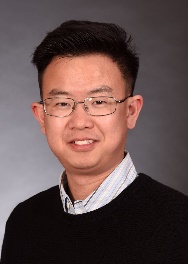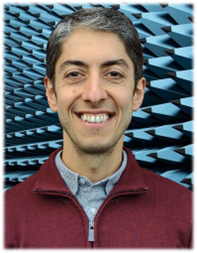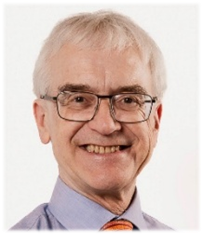Distinguished Lecturer Program Handbook
The Distinguished Lecturer Program (DLP) is overseen by the Distinguished Lecturer Program Committee (DLPC), with the chair of the Committee maintaining regular contact with the Distinguished Lecturers (DLs) and giving approval for DL visits to AP-S Chapters.
The Chair of the Committee has the ultimate responsibility for the appointment of the Distinguished Lecturers, for the day-to-day operation of the program, and for making timely reports to AdCom.
The IEEE AP-S DLP provides AP-S Chapters around the world with lectures by experts on topics of interest and importance to the AP community. The Chapters incur little or no cost in making use of this program. Each active Chapter can request a maximum of two physical visits per year by our Distinguished Lecturers. (One of the two visitors is allowed to be a former Distinguished Lecturer, i.e., a “wildcard” visitor, if the Chapter prefers.) There is no limit to the number of virtual distinguished lectures that can be hosted by a chapter. Permission for additional DL physical visits to a Chapter is contingent on funds and needs special approval by the chair of the Distinguished Lecturer Committee and the AP-S Treasurer. Requests by the Chapter Chairs must be approved by the chair of the Committee prior to the Chapter Chair making an official commitment to the DL. To initiate a visit by a DL, it is recommended that the Chapter Chair first contact the DL and discuss a tentative date for a visit. The Chapter Chair should then contact the chair of the Committee to obtain approval for the trip.
The DLs are required to visit at least three chapters in developing countries during their term.
It is strongly recommended that Chapters do not use their own chapter funds to cover part of the cost of the DL visit. Although offering to cover part of the cost may seem like a generous offer on the part of the Chapter, the purpose of the AP-S Distinguished Lecturer Program is to free up Chapter funds so that they can be used for other purposes.
Normally Distinguished Lecturers visit AP-S Chapters, but Sections or Councils may also be visited with permission of the chair of the Committee. (The chair of the Committee should receive some sort of assurance that a reasonable number of AP-S members will be present at the meeting.) A Distinguished lecturer visit to a Student Branch Chapter of AP-S requires special approval by the chair of the Committee. Normally such visits will be allowed if there is evidence of significant potential attendance, as well as approval of the local AP-S Chapter (if one exists in the local area).
The Chair of the Committee selects and appoints the Distinguished Lecturers. The Distinguished Lecturer Committee serves as an advisory role to assist in the selection process and also aids in the identification of new candidates. Sub Committee(s) of the DLPC may be formed for the selection process. The Chair of DLPC may invite IEEE experts outside the DLPC to sit in some selection panels, for example to select a DL under entrepreneurship category. Candidates may be invited by the DLPC or the Chair of the DLPC, nominated by another person that knows them, or be self-nominated.
The Chapters are strongly encouraged to use this program as a means to make their local AP community aware of the most recent scientific and technological trends. All distinguished lectures funded by this program should be freely accessible to all society members and preferably all IEEE members.
The IEEE AP-S has signed MOUs with its sister societies MTT-S and GRSS to collaborate through their Distinguished Lecturer Programs. One way of this collaboration is organizing Inter-Society Distinguished Lecturer (ISDL) Days or Workshops. ISDL Days or Workshops can be organized in connection with sister societies such as MTT-S, GRSS, EMC-S, AESS, ComSoc, ...
An ISDL day or workshop request may come from local chapters or joint chapters or may be proposed by a common request of DLPC chair of at least two Societies. The procedure is the same as requesting DL visits, noting that a clear strategy for membership development must be articulated in the region of the visit.
Expenses of society DLs who attend ISDL Days or Workshops are covered by their societies. Expenses of ISDLs are jointly covered by sister societies (e.g., ISDL of AP-S and MTT-S are covered equally (50% + 50%) by AP-S and MTT-s; ISDL of AP-S, MTT-S and GRSS are covered equally (33.3% + 33.3% + 33.3%) by AP-S, MTT-s and GRSS).
Contact information for the DLPC Chair, distinguished lecturers, AP-S Treasurer and AP-S Chapter Activities Coordinator are published in the AP-S website.
As always, your feedback on the Distinguished Lecturer Program is welcome by me and the Committee.
Levent Sevgi
IEEE AP-S Distinguished Lecturer Program Chair
- DLP Chair’s Notes
- Committee Members
- Welcome to our 2026 DLs
- ISDL Programs
- DL Visits/Tours
- Past Distinguished Lecturers
Distinguished Lecturer Program Chair
Professor Levent Sevgi,
Istanbul Technical University (Emeritus)
email:
Past Chairs:
Kwai Man Luk
Peter de Maagt
Danilo Erricolo
David Jackson
Dan Schaubert
Prabhakar Pathak
Karu Esselle
Past Distinguished Lecturer Appointments














